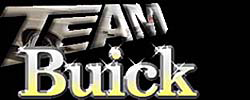Jyrki
As you know the fuel gauge operates by using a heating element.
This means the gauge movement is a function of wattage.
If you apply 12 volts to a 6 volt gauge you double the voltage and also double the current going to the element. Since wattage is voltage time’s amperage, the wattage in this case is 4 times the original and the gauge element goes up in smoke.
What the guy at the show forgot to mention is he added a resistor in series (Between the gauge and the tank) that had the same resistance as the gauge (when it is hot at full swing) so it drops 7 volts leaving 7 volts for the gauge. I used 7 because actual battery voltages when the engine is running are 7+ for the 6 volt and 14+ for the 12 volt batteries.
To find the resistance of the gauge when it is at full swing, apply 6 volts to the gauge with an amp meter in series to find the current. Then using ohm’s law divide the actual voltage measured with your volt meter by the current you just measured.
Note: You will need to use the 10 amp scale on you multimeter because the 300ma scale has too much resistance and will reduce the current that you are trying to measure.
The wattage the new resistor will have to dissipate will be the current you measured time’s the voltage drop across the resistor (7 volts). The actual wattage resistor you use is double that value or more so it runs reasonably cool.
Fixed resistors come in specific values so just use the next value up from your calculated value.
Let me know what you find or any problems you run into and we will find a solution.
Paul








Bookmarks